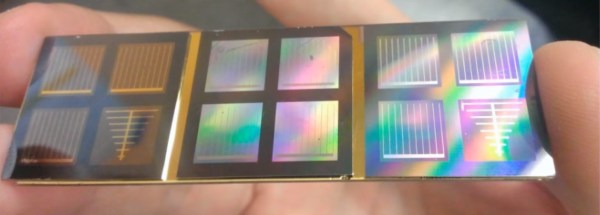Ages ago, making a custom circuit board was hard. Either you had to go buy some traces at Radio Shack, or you spent a boatload of money talking to a board house. Now, PCBs are so cheap, I’m considering tiling my bathroom with them. Today, making a custom chip is horrifically expensive. You can theoretically make a transistor at home, but anything more demands quartz tube heaters and hydrofluoric acid. Custom ASICs are just out of reach for the home hacker, unless you’re siphoning money off of some crypto Ponzi scheme.
Now things may be changing. Costs are coming down, the software toolchain is getting there, and Onchip, the makers of an Open Source 32-bit microcontroller are now working on what can only be called a, ‘OSH Park for silicon’. They’re calling it Itsy-Chipsy, and it’s promising to bring you your own chip for as low as $100.
The inspiration for this business plan comes from services like MOSIS that allows university classes to design their own chips on multi-project wafers. This aggregates multiple chips onto one wafer, bringing the cost of a prototype down from tens of thousands of dollars to about five thousand dollars, or somewhere around a thousand dollars a chip.
Itsy-Chipsy is taking this batch processing one step further. This is a platform that combines multiple projects on one die. That thousand dollar chip is now sixteen different projects, tied together with regulators, current sources, clocks, and process monitors. Using a 2 mm by 2 mm chip size, Itsy-Chipsy gives chip designers 350 μm of silicon using a 180 nm CMOS process. That’s enough for a basic 32-bit RISC-V microprocessor in a QFN or DIP 40 for just one hundred dollars.
This project is a contender for The Hackaday Prize — the Prize ends in November and we’d be amazed to see results by then. The Onchip team is talking to foundries, though, and it looks like there’s interest for this model in the industry. We’d guess that the best case scenario is a crowdfunding campaign for an OSH Park-like chip fab sometime in 2019. Whenever it comes, this is something we’re eagerly awaiting.





















